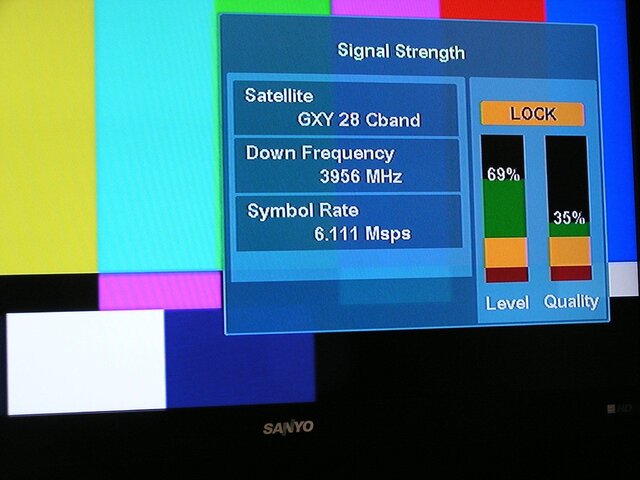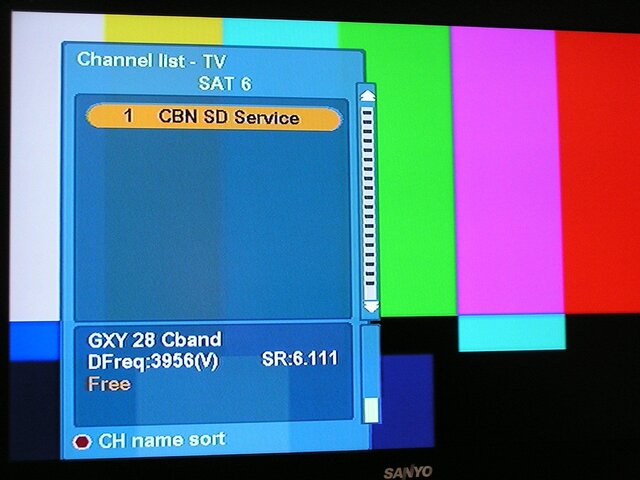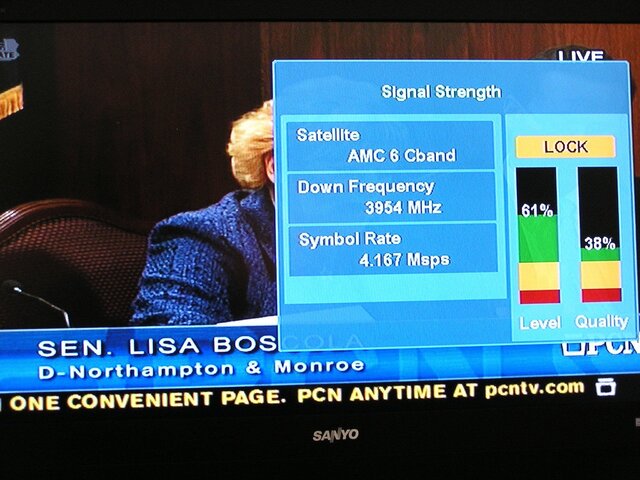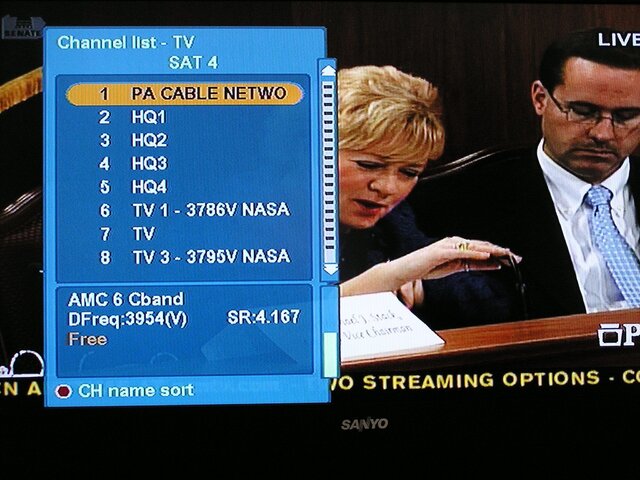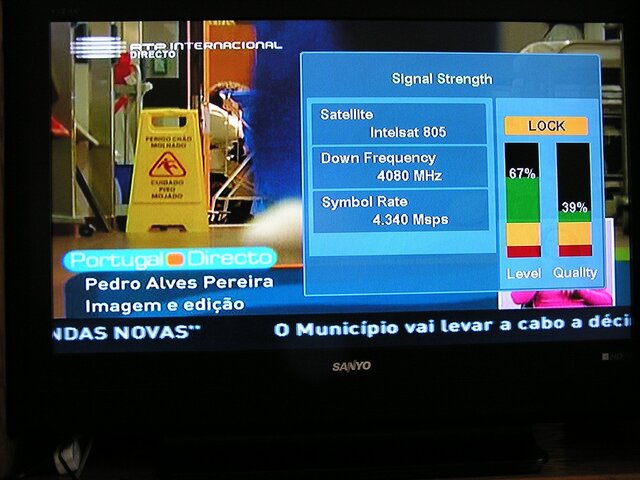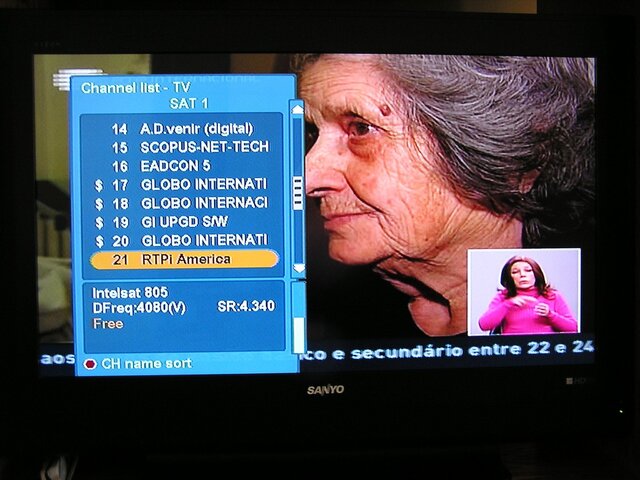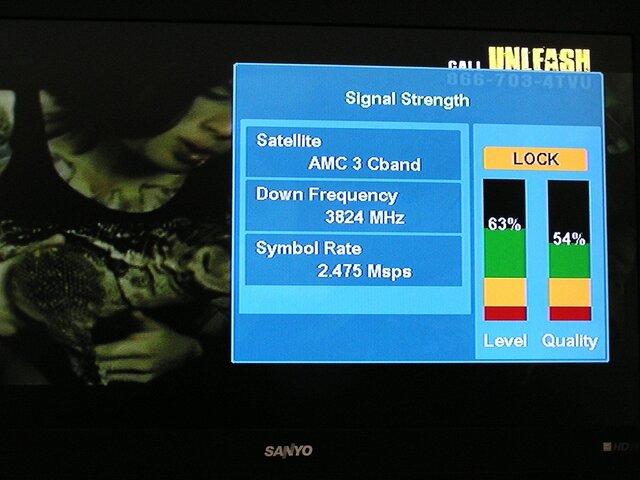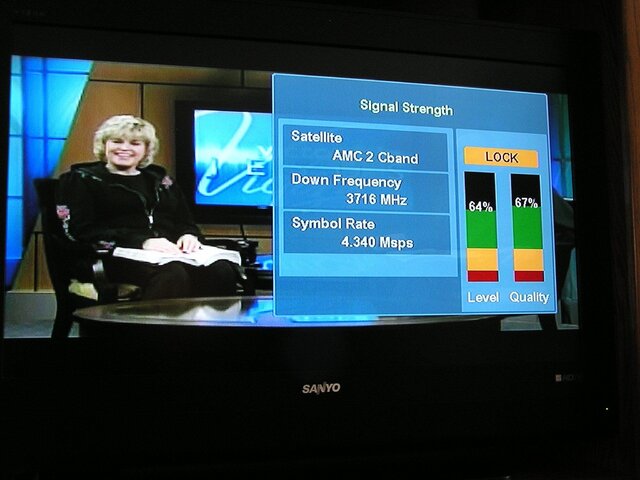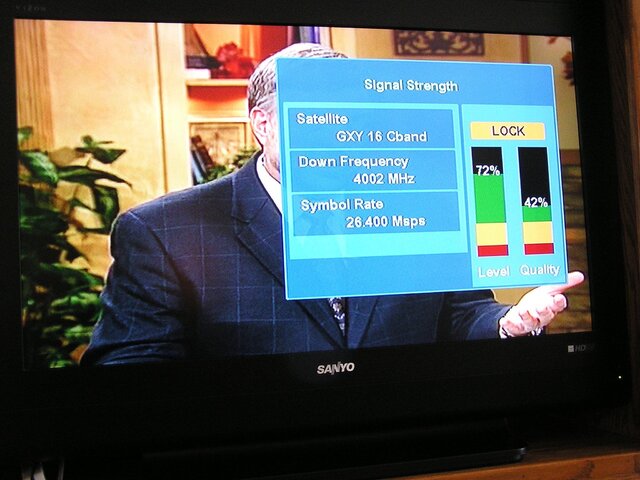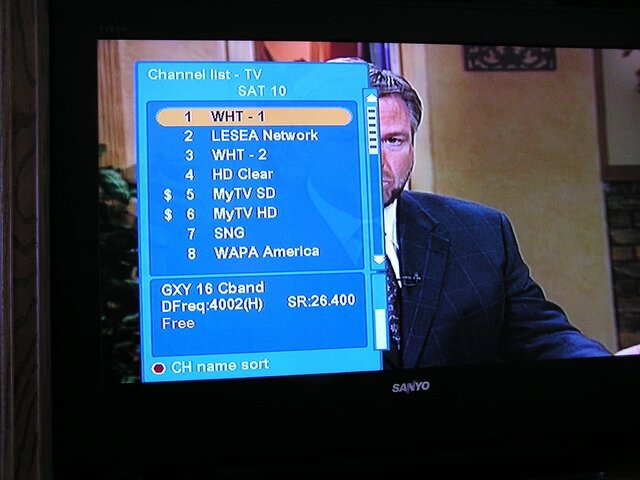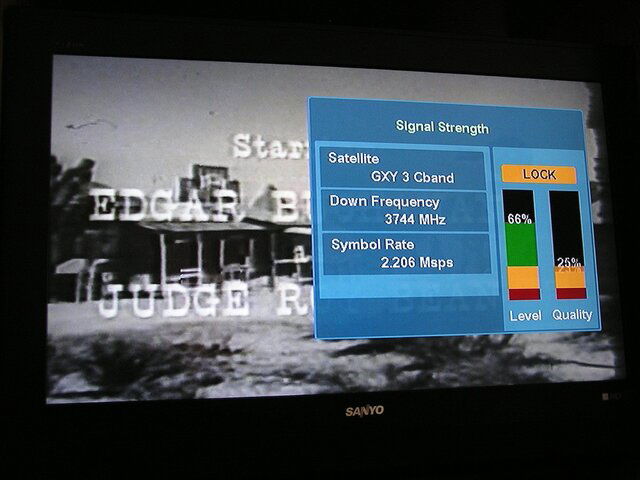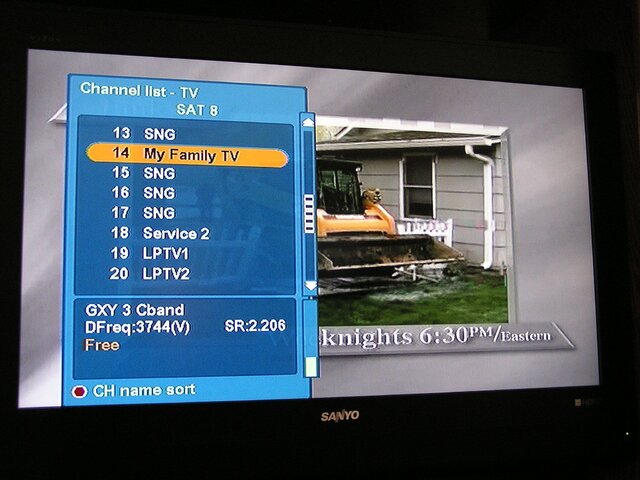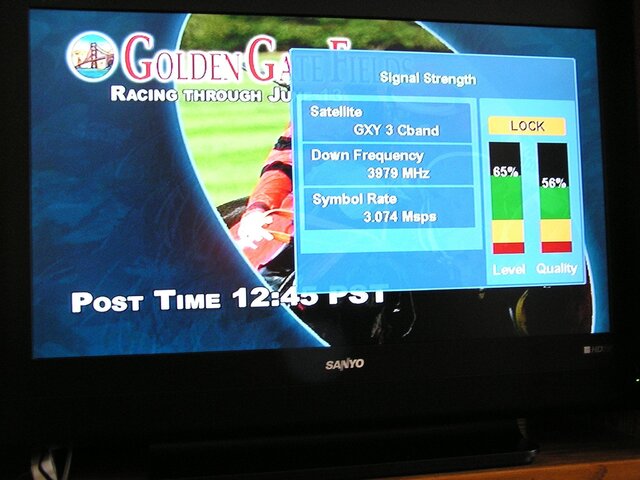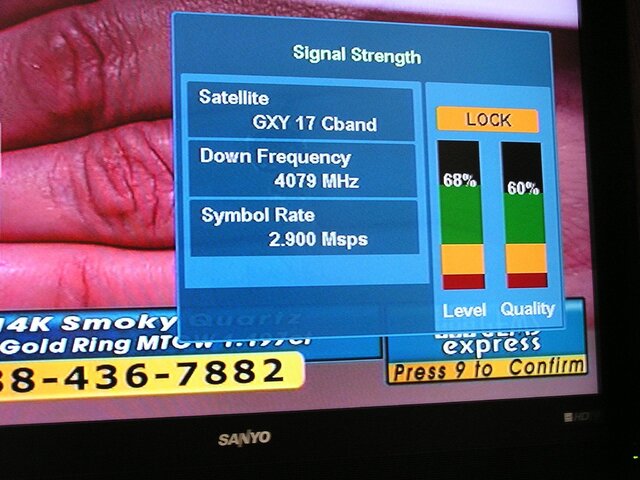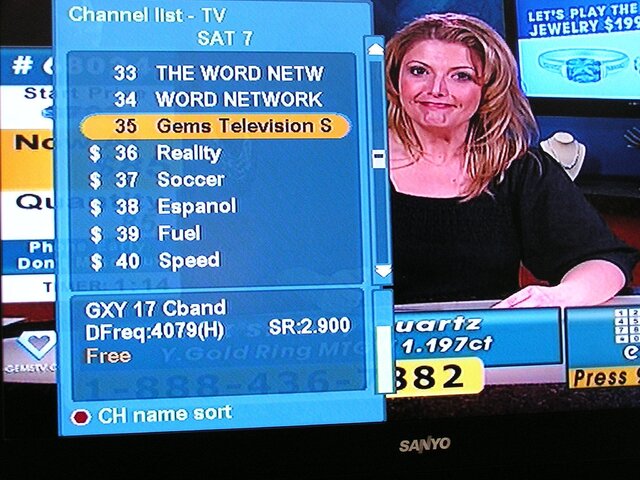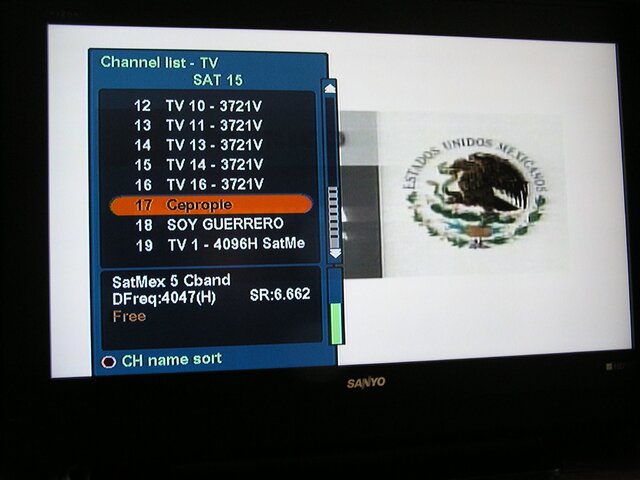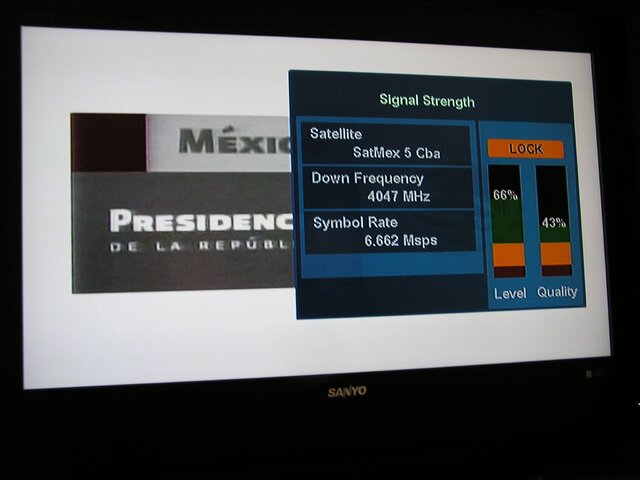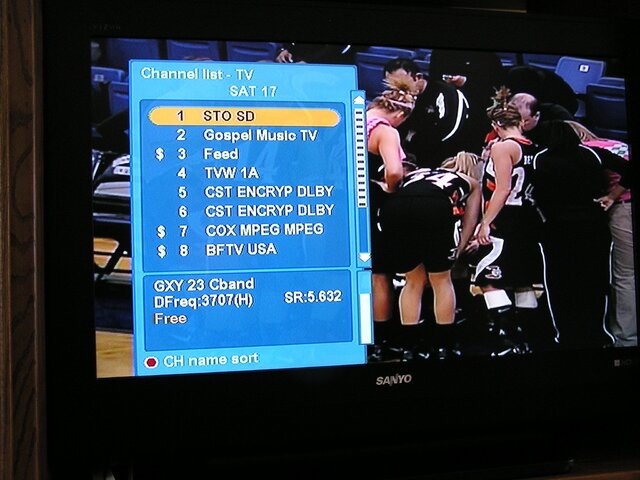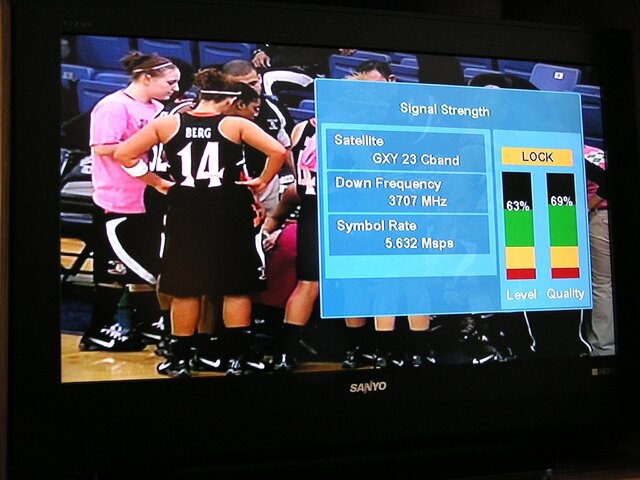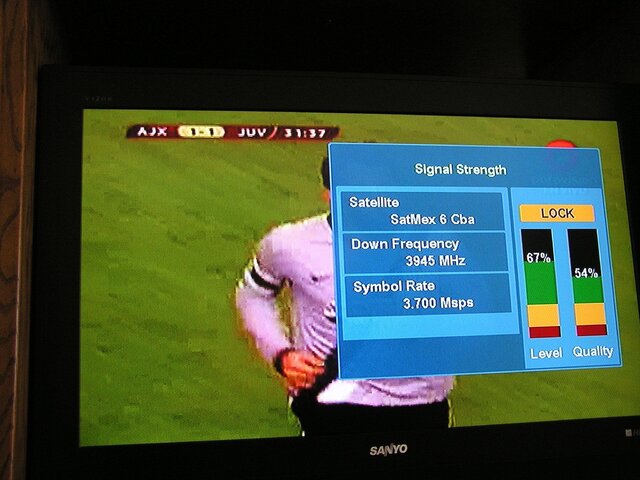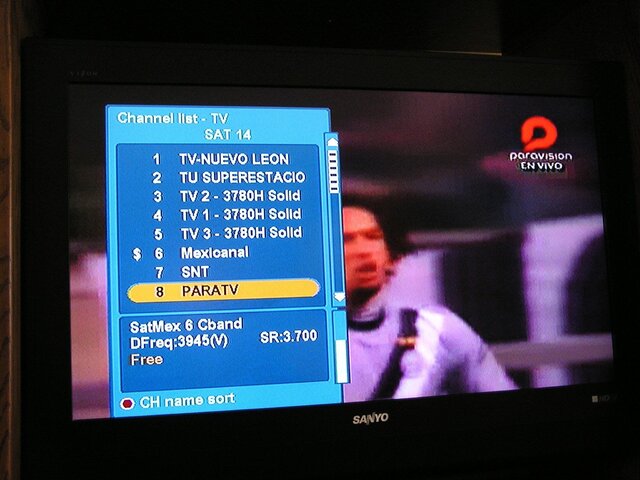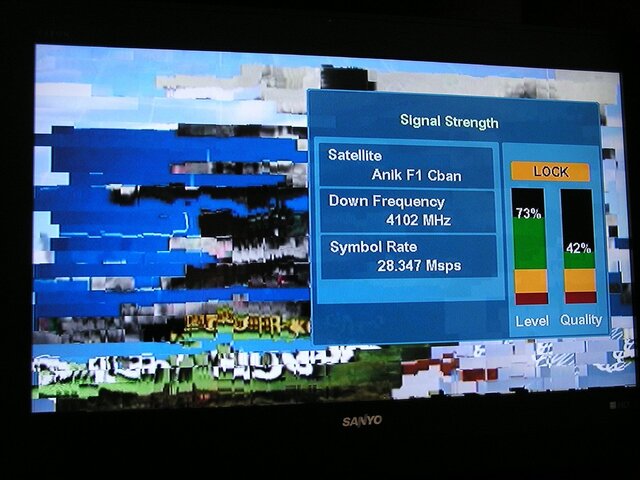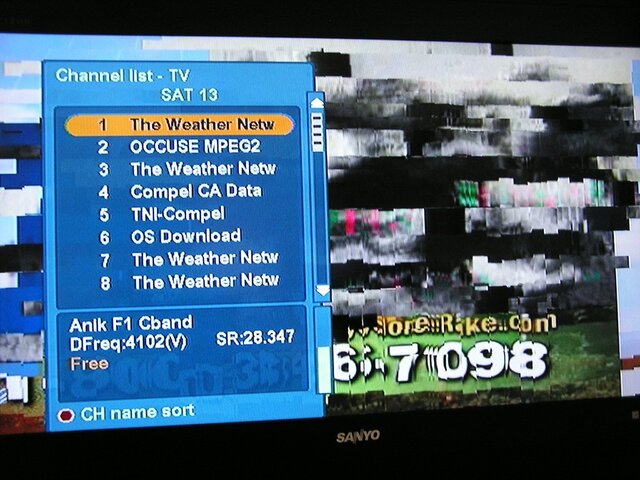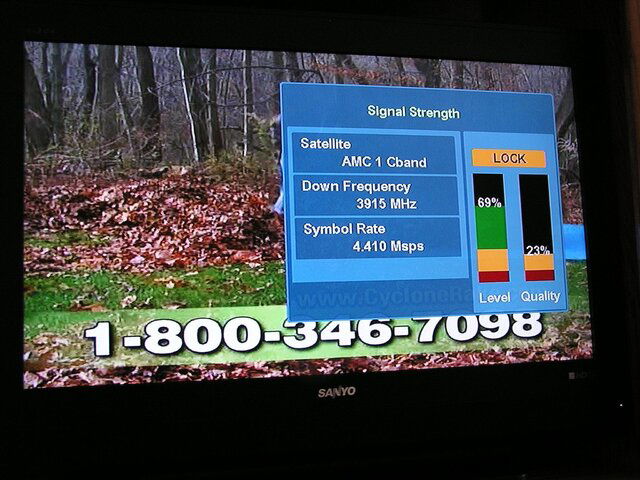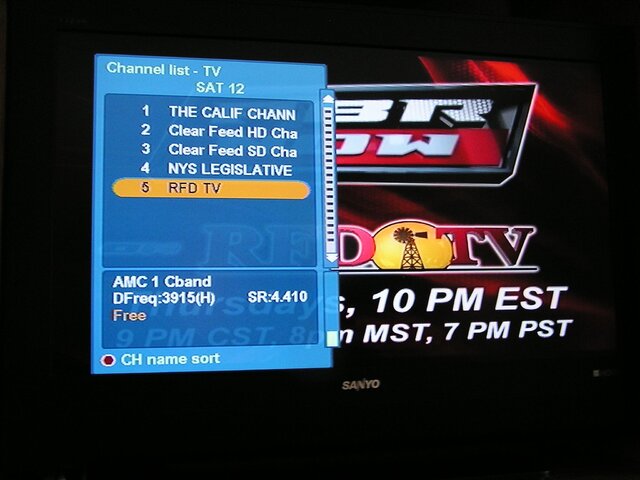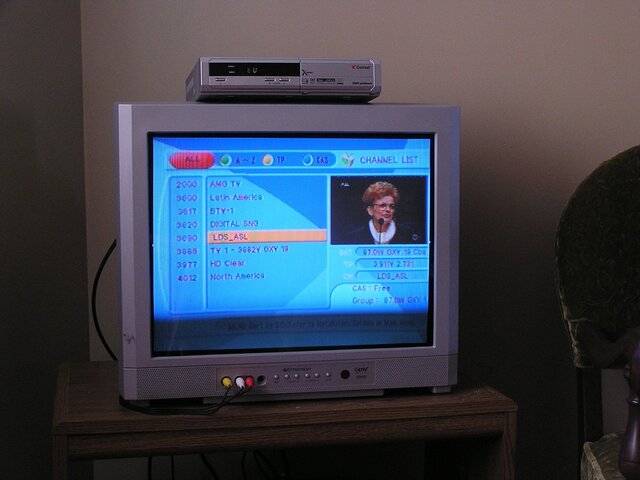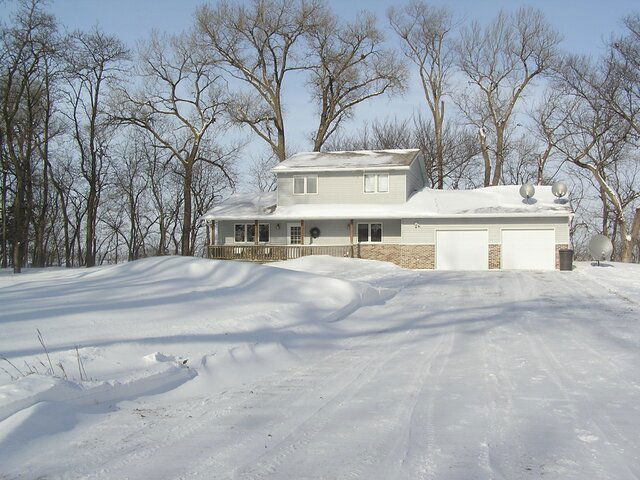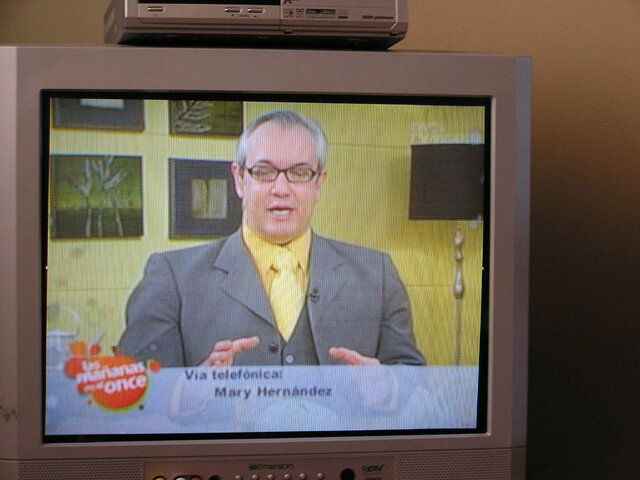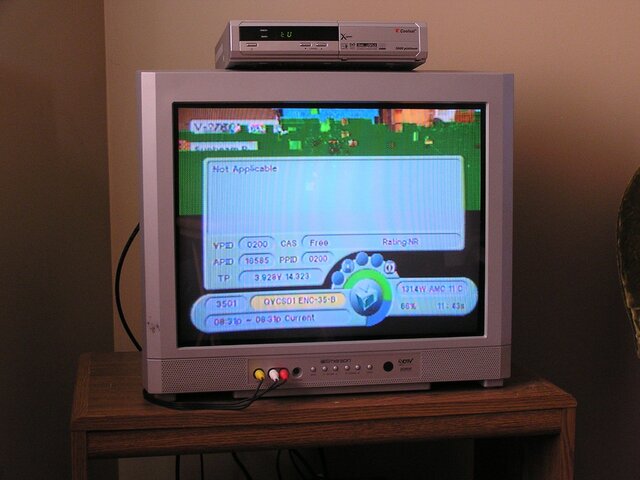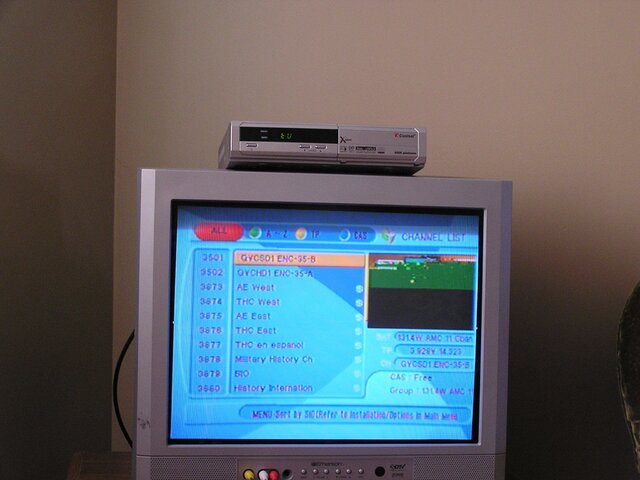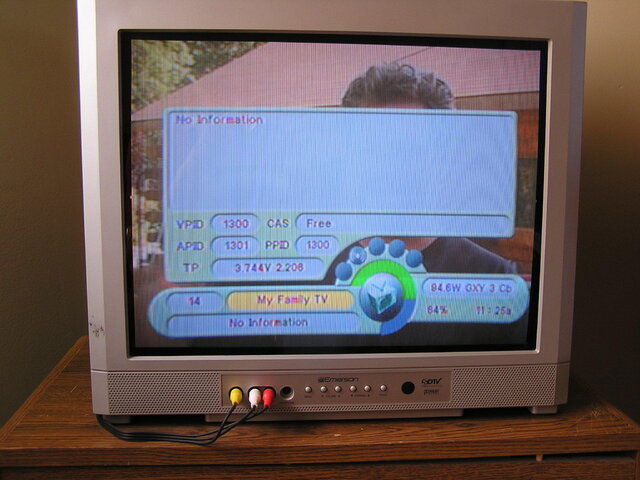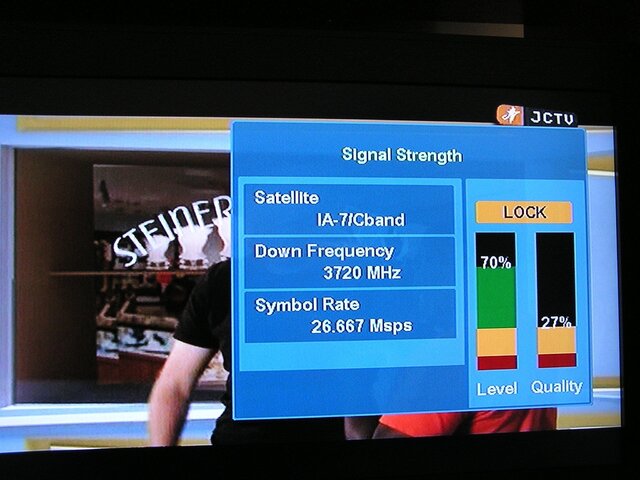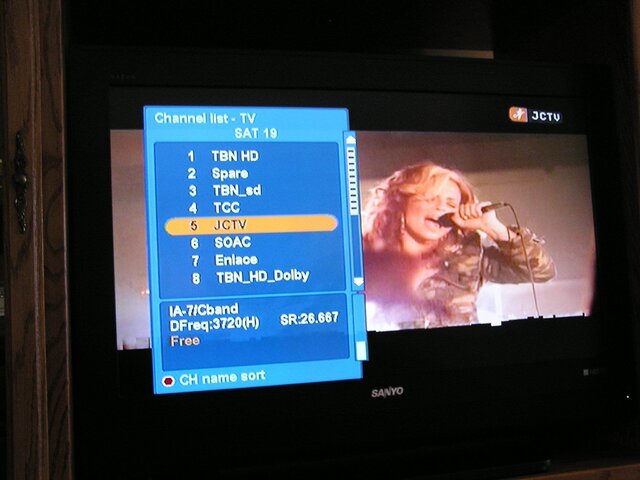FIELD TEST REVIEW of
WS International Model: DMX242 Quad Polar, Dual Output, Digital C-Band LNBF
I Have field tested several C-Band LNBF's on a motorized 1.2 meter offset dish. Robby Dosetareh was kind enough to send me a DMX242 LNBF to field test and share the results with you.
The DMX242 is a well built LNBF and the coax connectors are firmly mounted to the tube using screws. No need for an additional 7/16 inch wrench to tighten and loosen the connectors. The tube and scalar ring are protected with quality powder coat paint. Included is a Dielectric plate that can be inserted in the throat of the tube to receive circular broadcasts.
I will be using the GeoSatPro C2 and the DMX241 for honest comparisons of the DMX242 performance. I began testing C-Band reception on an offset dish a few years back using the BSC621-2 LNBF. I had fair results using the BSC621-2 but could not receive reliable signals for several desired C-Band channels. When the GeoSatPro dual C2 became available I rushed out to buy a couple, I loved the idea that two receivers could be connected to a single LNBF to feed broadcasts to my TV in the Living Room and TV in the Den. The GeoSatPro dual C2 performed almost identically to the BSC621-2. But I still had difficulties with several desired channels for quality reception. I began to experiment with different types of scalars and eventually ended up using the flat scalar that came with the LNB with a slight modification of attaching a metal socket to the inner ring which bumped the quality an additional 10 to 15%. When WS International came out with the DMX241 model LNBF, boasting a 70db gain and 13K noise figure I immediately purchased one. To my surprise it out performed the GeoSatPro C2, increasing signal quality levels roughly 5 to 10% across the board on all the C Band channels. Thus my dilemma; Use the dual C2 and feed C-Band broadcasts for two TV sets, or keep the DMX241 on the dish- use only the TV in the Living room but almost double my C-band reception.
Now the test results using the DMX242; Initially I had to weather the cold and snow to re-align the dish and install the DMX242 LNBF. I again tried different scalars, a commercially purchased conical scalar, my home made version of a scalar and the flat scalar that came with the LNB. I found the best results using the scalar ring that came with the LNB with the small modification of attaching a 9/16 inch metal socket to the inner ring. The DMX242 performed identical to the GeoSatPro dual C2 for the amount of C Band channels that I could receive. I documented the signal quality levels between the DMX242 and the GeoSatPro dual C2, there were no appreciable differences.
One thing for everyone to keep in mind is that the DMX242 was tested on a motorized 1.2 meter offset dish located near Omaha NE. The receivers I used during the tests were the Pansat 2700A and Coolsat 5000 stb. This is a marginal setup for testing DVB SD C-Band signals. I am still impressed with the results using the DMX242, and can only imagine the results using a larger prime focus dish.
Another thing I found during testing is that the Coolsat 5000 would pull in a few more C-Band channels without pixilation. But I used the Pansat 2700A when I took photos of the TV due to the fact that it created a better display illustrating the signal qualities. I took photos of signal quality levels for one channel off every C-Band satellite from 55.5W through 131W. I am attaching a few of them that I think would be of interest to everyone.
I wanted to test the DMX242 using my Motorola 4DTV receiver but have not been able to get to my cabin lot to retrieve it due to all the snow on the cabin road. I also wanted to test the dielectric plate for circular C-band broadcasts but it has been much too cold for any further testing. I noticed that I could pull in some signal on transponders off satellites further east of 55.5W and there is a circular transponder off 53W that I should be able to pick up. Where my dish is positioned in the yard it does not allow line of site of satellites further east of 45W due to tree obstructions. It would appear that the weather will not improve for many weeks so I am going ahead and posting what I have for test results. The circular transponder tests and tests using the 4DTV box will just have to wait.
I will not be able to attach all the photos in a single post so I will add posts to this thread and get in as many as I can. The first group of photos will be of the DMX242, the side by side photo of the three LNB's I used (DMX241, DMX24, GeoSatPro dual C2), my dish setup with the DMX242 installed (note that the skew markings of the DMX242 are 90 degrees off and align with the horizontal axis), and the scalar ring with the 9/16 inch socket taped to the inner ring.
I will also try to attach a C-band channel list (.ndf file) that I had created using the DMX241, and had edited out the channels that did not come in or pixilated to much using the DMX242. I used Channel Master to do the editing and I am not 100% sure that all the appropriate channels where deleted. The list is still pretty impressive using the small offset dish with the wide beam width. I believe using this marginal setup really shows the subtle differences between LNBs especially on weaker transponders.
I believe the DMX242 to be a quality LNBF and recommend it to everyone.
I also believe pictures are worth a thousand words so the photos in the following posts will say it all.
WS International Model: DMX242 Quad Polar, Dual Output, Digital C-Band LNBF
I Have field tested several C-Band LNBF's on a motorized 1.2 meter offset dish. Robby Dosetareh was kind enough to send me a DMX242 LNBF to field test and share the results with you.
The DMX242 is a well built LNBF and the coax connectors are firmly mounted to the tube using screws. No need for an additional 7/16 inch wrench to tighten and loosen the connectors. The tube and scalar ring are protected with quality powder coat paint. Included is a Dielectric plate that can be inserted in the throat of the tube to receive circular broadcasts.
I will be using the GeoSatPro C2 and the DMX241 for honest comparisons of the DMX242 performance. I began testing C-Band reception on an offset dish a few years back using the BSC621-2 LNBF. I had fair results using the BSC621-2 but could not receive reliable signals for several desired C-Band channels. When the GeoSatPro dual C2 became available I rushed out to buy a couple, I loved the idea that two receivers could be connected to a single LNBF to feed broadcasts to my TV in the Living Room and TV in the Den. The GeoSatPro dual C2 performed almost identically to the BSC621-2. But I still had difficulties with several desired channels for quality reception. I began to experiment with different types of scalars and eventually ended up using the flat scalar that came with the LNB with a slight modification of attaching a metal socket to the inner ring which bumped the quality an additional 10 to 15%. When WS International came out with the DMX241 model LNBF, boasting a 70db gain and 13K noise figure I immediately purchased one. To my surprise it out performed the GeoSatPro C2, increasing signal quality levels roughly 5 to 10% across the board on all the C Band channels. Thus my dilemma; Use the dual C2 and feed C-Band broadcasts for two TV sets, or keep the DMX241 on the dish- use only the TV in the Living room but almost double my C-band reception.
Now the test results using the DMX242; Initially I had to weather the cold and snow to re-align the dish and install the DMX242 LNBF. I again tried different scalars, a commercially purchased conical scalar, my home made version of a scalar and the flat scalar that came with the LNB. I found the best results using the scalar ring that came with the LNB with the small modification of attaching a 9/16 inch metal socket to the inner ring. The DMX242 performed identical to the GeoSatPro dual C2 for the amount of C Band channels that I could receive. I documented the signal quality levels between the DMX242 and the GeoSatPro dual C2, there were no appreciable differences.
One thing for everyone to keep in mind is that the DMX242 was tested on a motorized 1.2 meter offset dish located near Omaha NE. The receivers I used during the tests were the Pansat 2700A and Coolsat 5000 stb. This is a marginal setup for testing DVB SD C-Band signals. I am still impressed with the results using the DMX242, and can only imagine the results using a larger prime focus dish.
Another thing I found during testing is that the Coolsat 5000 would pull in a few more C-Band channels without pixilation. But I used the Pansat 2700A when I took photos of the TV due to the fact that it created a better display illustrating the signal qualities. I took photos of signal quality levels for one channel off every C-Band satellite from 55.5W through 131W. I am attaching a few of them that I think would be of interest to everyone.
I wanted to test the DMX242 using my Motorola 4DTV receiver but have not been able to get to my cabin lot to retrieve it due to all the snow on the cabin road. I also wanted to test the dielectric plate for circular C-band broadcasts but it has been much too cold for any further testing. I noticed that I could pull in some signal on transponders off satellites further east of 55.5W and there is a circular transponder off 53W that I should be able to pick up. Where my dish is positioned in the yard it does not allow line of site of satellites further east of 45W due to tree obstructions. It would appear that the weather will not improve for many weeks so I am going ahead and posting what I have for test results. The circular transponder tests and tests using the 4DTV box will just have to wait.
I will not be able to attach all the photos in a single post so I will add posts to this thread and get in as many as I can. The first group of photos will be of the DMX242, the side by side photo of the three LNB's I used (DMX241, DMX24, GeoSatPro dual C2), my dish setup with the DMX242 installed (note that the skew markings of the DMX242 are 90 degrees off and align with the horizontal axis), and the scalar ring with the 9/16 inch socket taped to the inner ring.
I will also try to attach a C-band channel list (.ndf file) that I had created using the DMX241, and had edited out the channels that did not come in or pixilated to much using the DMX242. I used Channel Master to do the editing and I am not 100% sure that all the appropriate channels where deleted. The list is still pretty impressive using the small offset dish with the wide beam width. I believe using this marginal setup really shows the subtle differences between LNBs especially on weaker transponders.
I believe the DMX242 to be a quality LNBF and recommend it to everyone.
I also believe pictures are worth a thousand words so the photos in the following posts will say it all.
Attachments
-
 1- DMX242 LNBF.JPG498.1 KB · Views: 986
1- DMX242 LNBF.JPG498.1 KB · Views: 986 -
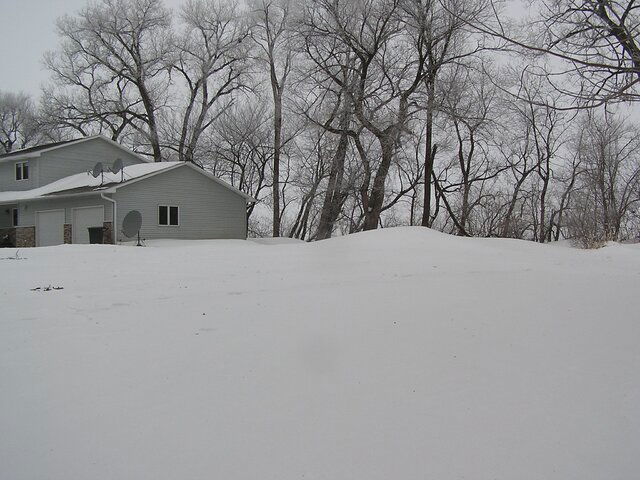 7- 1.2 meter dish setup in the yard.JPG500.9 KB · Views: 830
7- 1.2 meter dish setup in the yard.JPG500.9 KB · Views: 830 -
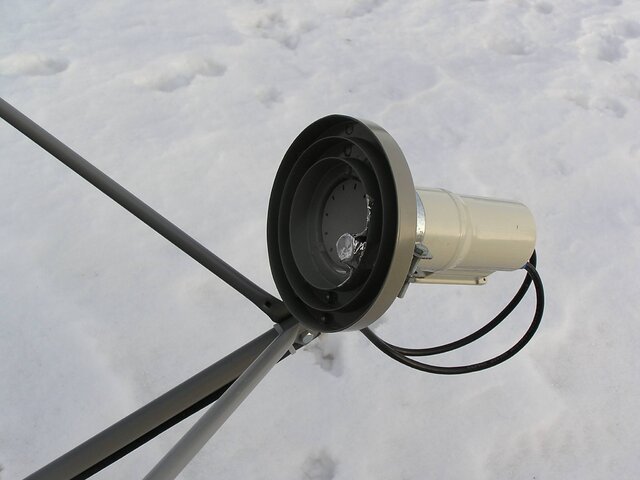 6- Illustrating socket modified scalar on dish.JPG129.7 KB · Views: 913
6- Illustrating socket modified scalar on dish.JPG129.7 KB · Views: 913 -
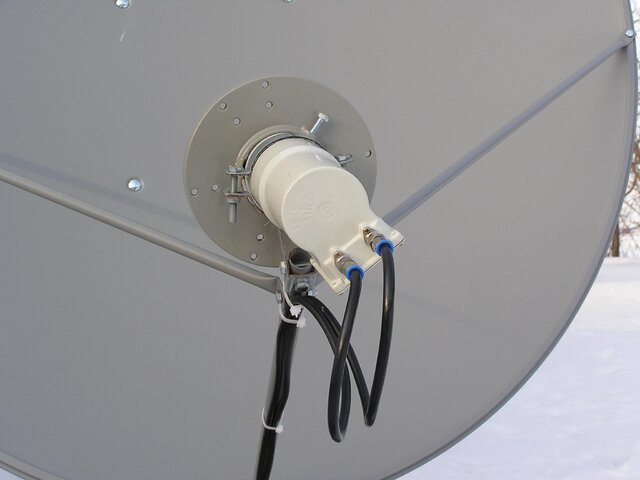 5- Close up of DMX242 orientation on dish.JPG111.1 KB · Views: 930
5- Close up of DMX242 orientation on dish.JPG111.1 KB · Views: 930 -
 4- DMX242 mounted on dish.JPG427.2 KB · Views: 909
4- DMX242 mounted on dish.JPG427.2 KB · Views: 909 -
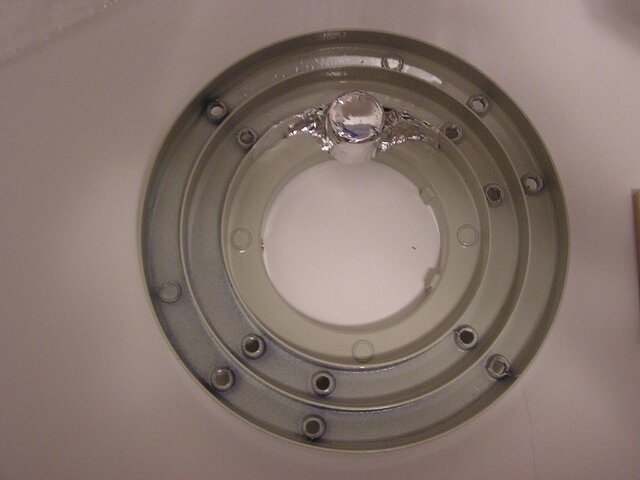 3- DMX242 scalar with socket modification.JPG494.6 KB · Views: 946
3- DMX242 scalar with socket modification.JPG494.6 KB · Views: 946 -
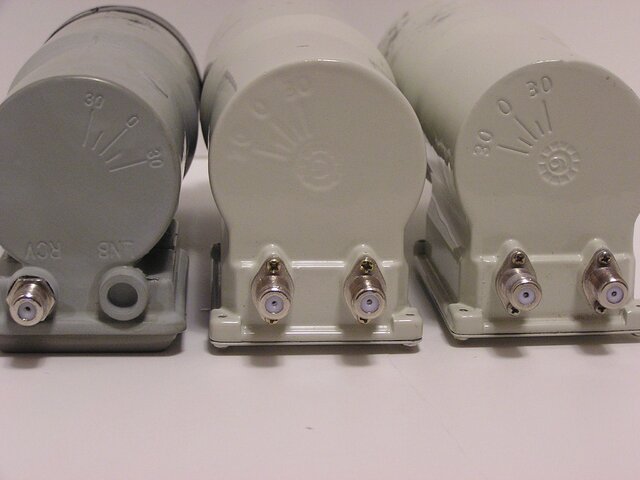 2- LNBs side by side.JPG434.8 KB · Views: 953
2- LNBs side by side.JPG434.8 KB · Views: 953



